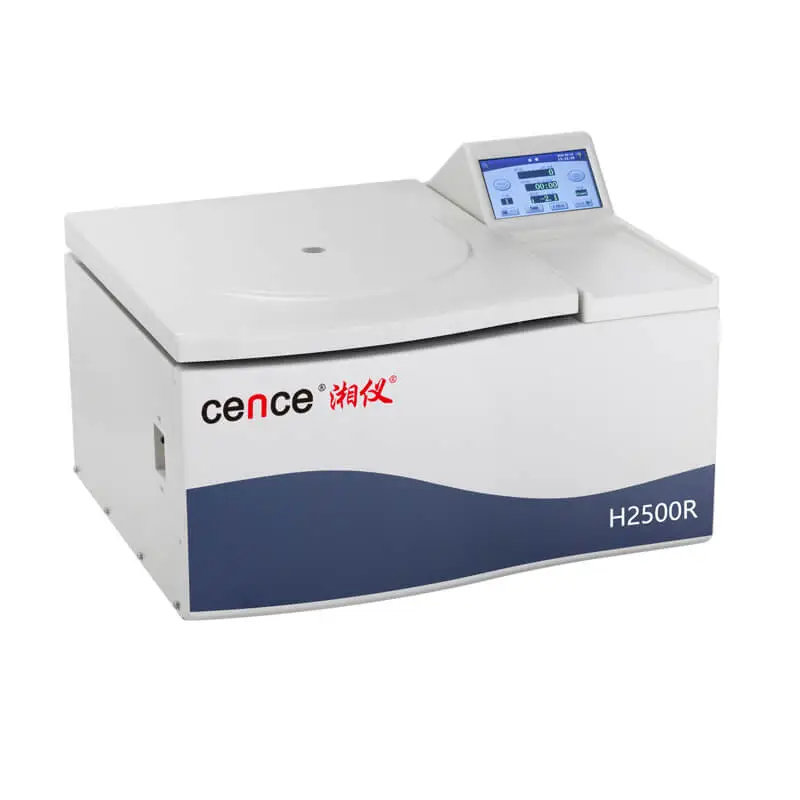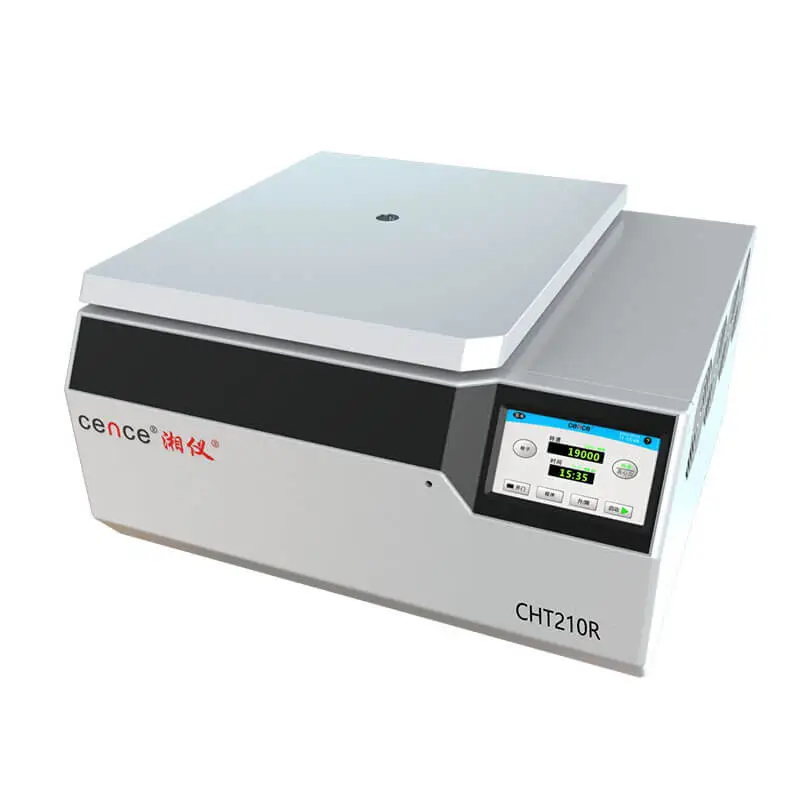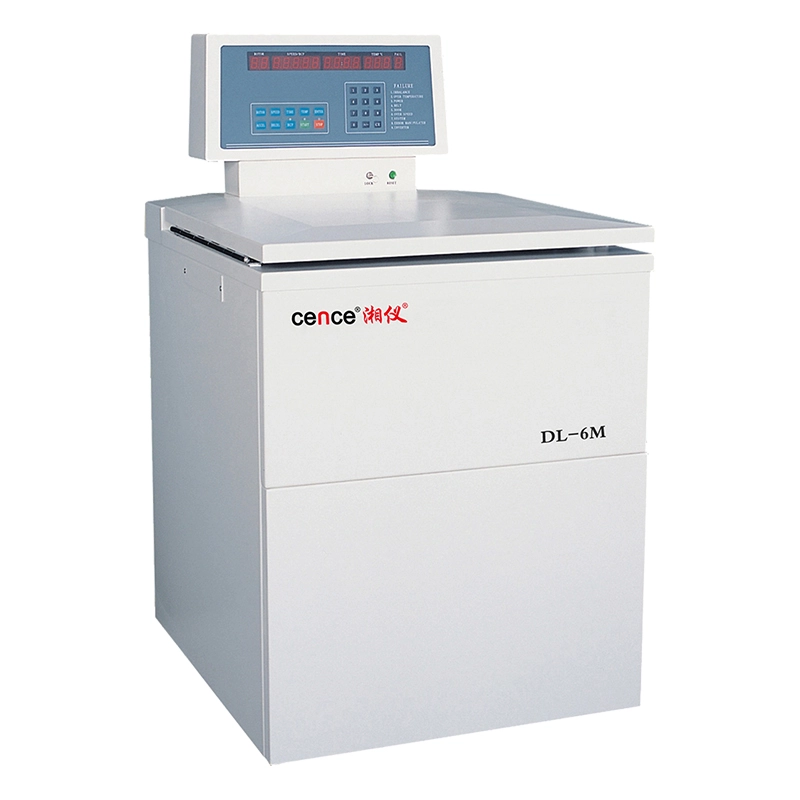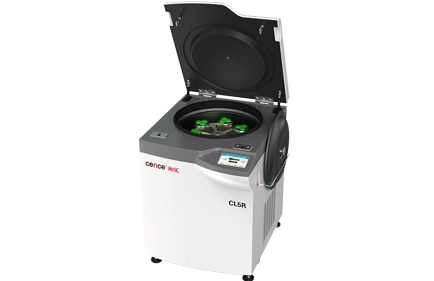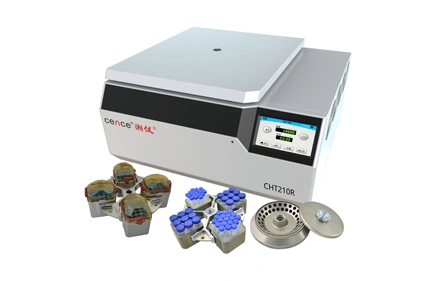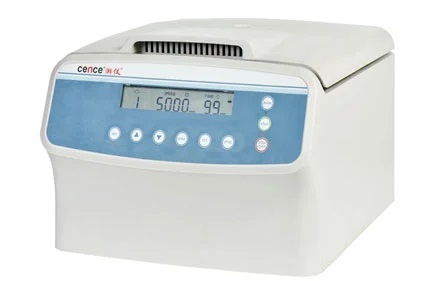The low-speed centrifuge uses the radial acceleration (i.e. centrifugal force) generated by rotation to effectively separate components of different densities and sizes in the sample to be processed. It has a wide range of applications in biomedical, molecular biology, and chemical fields.
Working principle of low-speed centrifuge
The working principle of the low-speed centrifuge machine is based on the application of the rotational force field. By placing the sample in a rotating centrifugal disc, centrifugal force is generated to separate the sample into components of different densities and sizes. Specifically, the low-speed centrifuge typically consists of the following key components:
1. Centrifugal disc: The centrifugal disc is a circular platform where the sample to be processed is placed. It can rotate at a certain speed.
2. Sample tube: The sample tube is a small tube or bottle that contains the sample to be processed, and can be designed to stay stable and prevent leaks.
3. Motor and drive system: The motor provides the driving force to make the centrifugal disc rotate quickly. The drive system can control the motor's speed and time.
When the low-speed centrifuge is started, the motor starts to drive the centrifugal disc to rotate at high speed. This generates a radial acceleration (also known as "centrifugal force") pointing outward towards the center. By solving the required angular acceleration for rotation when the object is balanced between two forces, we get: F = m * a
Where F is the resultant external force, i.e. the force when the discrete mass element m is multiplied by the radial acceleration a. The centrifugal force acts differently on the components in the sample. Substances with greater mass and density experience greater centrifugal force, pushing them outwards, while substances with smaller mass and density tend to concentrate inwards. As a result, the sample to be processed gradually stratifies during rotation. By controlling the speed and time of the centrifuge, different components can be distributed in different positions and can be further operated by stopping the rotation and collecting the precipitation or suspension at each position.
 Common applications of low-speed centrifuge
Common applications of low-speed centrifuge
1. Cell culture: Low-speed centrifuges can be used for cell sedimentation, washing, and collection in cell culture. It helps laboratory personnel to separate and purify different types of cells for further research and application.
2. DNA/RNA extraction: Low-speed centrifuges can be used in the DNA or RNA extraction process to separate impurities such as cell fragments and proteins from the target nucleic acids. By adjusting the centrifugal force and time, nucleic acids can be efficiently purified from the sample.
3. Protein preparation: Low-speed centrifuges can be used for solid-liquid phase separation in protein preparation. By rotating the mixture, proteins can be enriched in the supernatant, enabling purification and concentration of proteins.
4. Diabetes management: Low-speed centrifuges can be used for blood analysis in diabetes management. It quickly separates red blood cells and plasma from whole blood samples, facilitating blood glucose testing and other related index measurements.
5. Drug screening: Low-speed centrifuges can be used for sample processing in drug screening. It helps laboratory personnel separate mixtures of compounds interacting with cells or proteins and evaluate their activity and effects.
6. Sample preparation: Low-speed centrifuges can be used for precipitation, washing, and collection in sample preparation. It helps laboratory personnel separate impurities from target components, improving sample purification and purity.
The low-speed centrifuge has a variety of applications in life science research, clinical diagnosis, drug development, and can perform separation, purification, and concentration operations on samples.
 English
English 한국어
한국어 français
français Deutsch
Deutsch Español
Español italiano
italiano русский
русский português
português العربية
العربية tiếng việt
tiếng việt Indonesia
Indonesia
 Common applications of low-speed centrifuge
Common applications of low-speed centrifuge